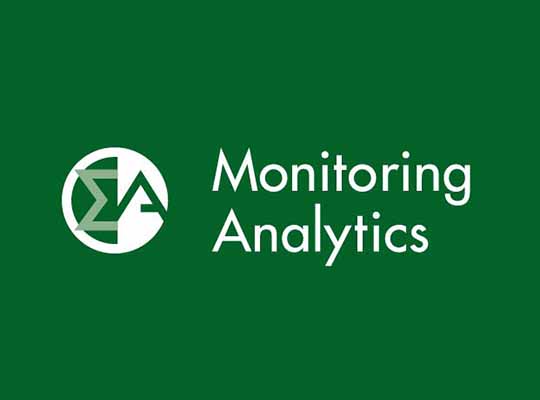EAGLEVILLE – PJM Interconnection’s wholesale electric energy market produced competitive results during the first six months of 2021, according to the 2021 Quarterly State of the Market Report for PJM: January through June released today by Monitoring Analytics, LLC, the Independent Market Monitor for PJM.
The Independent Market Monitor, Joseph Bowring, announced findings of the report. The report is the Independent Market Monitor’s assessment of the competitiveness of the wholesale electricity markets managed by PJM in 13 states and the District of Columbia. The report includes analysis of market structure, participant behavior and market performance for each of the PJM markets.
“Our analysis concludes that the results of the PJM Energy Market were competitive in the first six months of 2021,” Bowring said.
Energy prices increased significantly in the first six months of 2021 from the very low levels in 2020, but remained 9.5 percent below the five year average for the first six months of the five year period from 2015 through 2019. Energy prices were lower in 2020 than in any year since PJM markets were established in 1999. The load-weighted average, real-time LMP was 57.8 percent higher in the first six months of 2021 than in the first six months of 2020, $30.62 per MWh versus $19.40 per MWh. Of the $11.22 per MWh increase, 91.7 percent was a direct result of higher fuel costs, particularly higher natural gas prices. Load increased due to colder winter and hotter summer weather and the economic recovery. PJM load increased by 5.9 percent compared to the first six months of 2020, and load increased by 1.6 percent even after controlling for the impact of weather.
Energy prices in PJM in the first six months of 2021 were set, on average, by units operating at, or close to, their short run marginal costs, although this was not always the case. This is evidence of generally competitive behavior and competitive market outcomes, although high markups for some marginal units did affect prices.
The total cost of wholesale power consists primarily of the cost of energy, capacity and transmission. The cost of energy has been the largest component, the cost of capacity has been the second largest and the cost of transmission service has been third largest. In 2020, for the first time since the start of the PJM Capacity Market in 2007, the cost of transmission was greater than the cost of capacity for an entire year. The cost of transmission continued to be greater than the cost of capacity in the first six months of 2021. The total cost of wholesale power increased by 27.8 percent, from $43.03 in the first six months of 2020 to $54.97 in the first six months of 2021.
Higher energy prices and higher gas costs made coal units more economic in the first six months of 2021. The share of total PJM energy produced from coal increased from 17.6 percent in the first six months of 2020 to 23.5 percent in the first six months of 2021, still below the coal share in the first six months of 2019, while the share of energy produced from natural gas decreased from 39.2 to 35.6 percent, still above the natural gas share in the first six months of 2019.
Net revenue is a key measure of overall market performance as well as a measure of the incentive to invest in new generation to serve PJM markets. Theoretical net revenues from the energy market increased for all unit types in the first six months of 2021 compared to the first six months of 2020. Theoretical net revenues increased by 69 percent for a new combustion turbine, 53 percent for a new combined cycle, 3,288 percent for a new coal unit, and 57 percent for a new nuclear plant.
Total energy uplift charges increased by $ 55.7 million or 236.8 percent, from $23.5 million in the first six months of 2021 to $79.2 million in the first six months of 2021.
When there are binding transmission constraints and locational energy price differences, customers pay more for energy than generation is paid to produce that energy. The difference is congestion. Congestion belongs to customers and should be returned to customers. Total congestion increased by $174.2 million or 96.9 percent, from $179.8 million in the first six months of 2020 to $354.0 million in the first six months of 2021. But only 46.2 percent of total congestion paid by customers for the 2020/2021 planning period was returned to customers through the ARR and self-scheduled FTR revenues offset. The goal of the FTR market design should be to ensure that customers have the rights to 100 percent of the congestion that customers pay.
The Independent Market Monitor (also known as the Market Monitoring Unit or MMU) evaluates the operation of PJM’s wholesale markets to identify ineffective market rules and tariff provisions, proposes improvements to market rules and tariff provisions when needed, monitors compliance with and implementation of the market rules, identifies potential anticompetitive behavior by market participants and provides comprehensive market analysis critical for informed policy and decision making. Joseph Bowring, the Market Monitor, ensures the independence and objectivity of the monitoring program.













